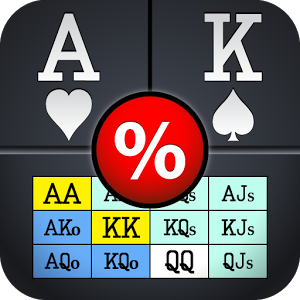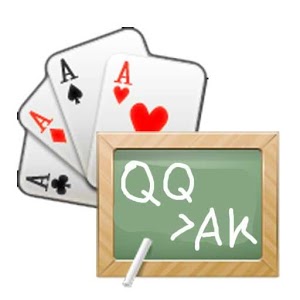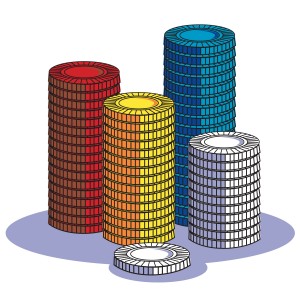I read a lot of hand examples and answer a lot of questions in the poker forum at my website, and there are some common errors that I consistently see. Beginning poker players, and even some players with a decent amount of experience, have misconceptions on when they should raise and when they should call. In general, a player should raise when he has the best hand. Most players understand this. What they don’t understand is how to define the best poker hand.
The best hand is simply the hand that has the highest chance of winning by the river; this can be either a made hand or a big draw on the flop. A common error by many players in limit hold’em games is not getting enough value for their big draws. Sometimes it is more profitable to raise your strong draws on the flop rather than call. Let’s look at this concept in more detail.
The player with the best made hand on the flop doesn’t always have the best chance of winning by the river. For example, your opponent holds the Ac 10d and you hold the Qs Js with a flop of 10s 9s 3c. The Q J is about a 2-to-1 favorite to win this hand. When the chance that you will win is higher than the percentage of bets you are contributing to the pot, you should often choose the strategy that will get as many bets in the pot as possible.
Let’s look at a simple example: You hold the Kc 9c with a flop of Ac Jc 6d. You have the nut-flush draw, which is about 2-to-1 against improving by the river. Four opponents call on the flop and it is your turn to act. It is obvious that you should at least call with this big draw. A better question is whether it would be better to raise. In this particular hand, you are contributing just 20 percent of the bets going into the pot, yet you have a 33 percent chance of winning the pot by the river. This is a very profitable situation in the long run, and an excellent spot to raise to build as big a pot as possible.
Now let’s look at another example: The same flop comes, but this time you are against a lone opponent. Your opponent is a rock who never bets unless he has at least top pair. In this case, you still have about a 33 percent chance of winning the hand, but you’ll be contributing 50 percent of the bets in the pot. Each bet that goes into the pot now is in your opponent’s favor. Realize that you will still draw, since the amount of money already in the pot gives you good pot odds, but raising the flop would only help your opponent, unless you are trying to buy a free card.
We can make some generalizations about raising draws for value. With 14 outs, you are about even money to improve your hand with two cards to come. Therefore, each bet that goes into the pot against a lone opponent is a break-even proposition. You would be indifferent as to how many bets go into the pot. Against two or more opponents while having 14 outs, you usually should choose the strategy that will maximize the number of bets that go into the pot.
When you have eight or nine outs, such as open-end straight draws or flush draws, you are about 2-to-1 against improving by the river. Therefore, you are indifferent against two opponents. Against one opponent, you would prefer to minimize the number of bets. Against three or more opponents, you would prefer to maximize the number of bets. It should be apparent that it is to your advantage to add more bets to the pot when you have a 33 percent chance of winning but are contributing only 20 percent to 25 percent of the bets.
With 11 or 12 outs, such as a flush or straight draw with an overcard, you would show a profit against two or more opponents and would have a small negative expectation against a lone opponent.
Once we decide that it is to our advantage to maximize the number of bets, the question becomes how we should do this. With big draws, it is usually to your benefit to keep as many opponents in the pot as possible (one exception to this is when the pot is so big that you want to drive out opponents to give yourself some other outs, such as making your overcards good). Therefore, if you want to keep opponents in the hand, you need to be careful when you raise. For example, if the small blind bets and you are in early position with several players left to act behind you, simply calling would be the best strategy, as you do not want to force the remaining opponents out of the pot. You also might be careful betting into a preflop raiser with several opponents yet to act behind him, since you risk him raising and driving out the remaining players.
However, if several opponents have already called, you can consider raising to get them to add another bet to the pot. When you act early, a smart play is to try for a check-raise. This is especially true when the preflop raiser acts right behind you. By checking, you allow an opponent to bet and other opponents to call. Once you get your opponents committed to the pot, you can raise. If someone reraises, you now have the opportunity to cap it. Remember, each additional bet that goes into the pot is to your advantage when the probability that you will win the hand is greater than the percentage of bets you are putting into the pot.
Submit your review | |










